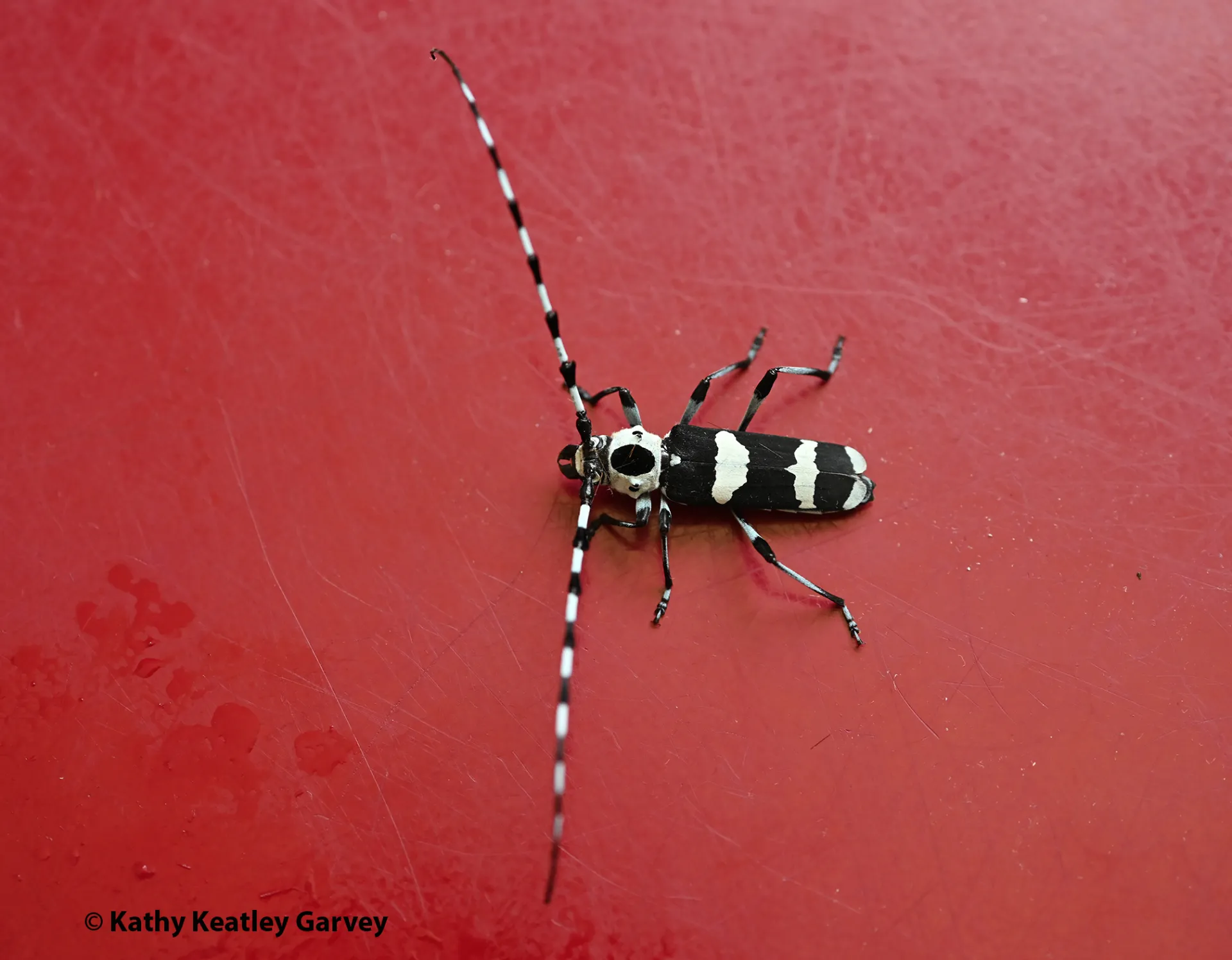
What's that bug?
If you're painting your house, a mural, or your vehicle, you have a better chance of seeing it.
Vacaville artist Joi McNeill, who is painting a mural on a building in the 300 block of Merchant Street, Vacaville, saw one today. She's working on a mural that includes the Old Town Hall, a Pony Express rider, boxes of fruit and more.
What did she see? The banded alder borer, Rosalia funebris, in the family Cerambycidae. It's a longhorned beetle with spectacular black, white and blue coloration. It almost looks comical.
We saw our first one last year on a freshly painted red bollard at a Vacaville supermarket.
What a show stopper!
Look closely and you'll see the dark elytra (wing covers) with white bands and a white thorax with a large black spot. What's really striking, though, are the long, black-and-white banded antennae.
The beetle "feeds during its larval stage in declining or dead branches of broadleaf trees, including alder, ash, California bay, oak, and willow," according to the UC Statewide Integrated Pest Management Program. "Longhorned beetles develop though four life stages—egg, larva, pupa, and adult. Adult banded alder borers emerge and mate from April through August. Adult females lay eggs individually on small- to medium-sized, dying or recently dead branches. The eggs hatch within 2 weeks and the larvae bore in and feed for 6 to 7 months under the bark. Mature larvae then bore in more deeply to overwinter as pupae. In the spring, pupae develop into adults, each of which chews an exit hole and emerges from the branch."
"The banded alder borer is the only species of this genus in North America, occurring from Alaska to southern California and in the Rocky Mountains from Idaho to New Mexico," according to Washington State University Extension.
However, scientists say it's not a significant pest because the females lay their eggs in dead, downed or damaged branches.
You may never see a banded alder borer, but if you're painting a mural, a structure or a vehicle, don't be alarmed. It's harmless.

